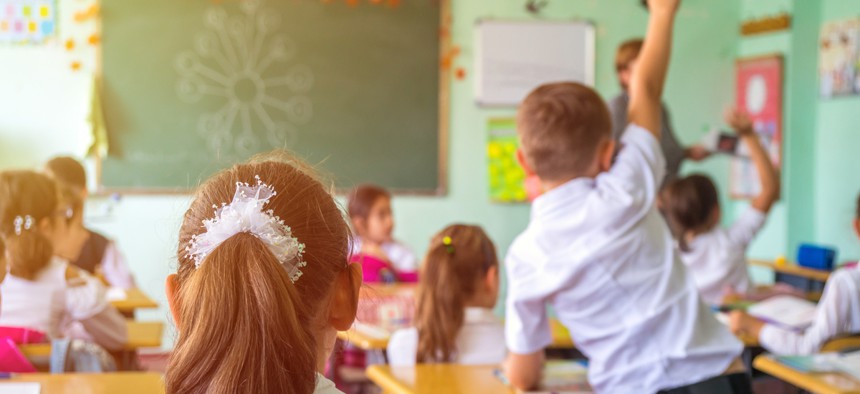One in Eight NYC Students is Homeless by Fifth Grade

Researchers tracked more than 81,000 students who started kindergarten in 2012. Shutterstock
New research found that homelessness among students in New York City varied widely depending on geography and ethnicity.
One in eight public school students in New York City experiences homelessness before fifth grade, according to new research from New York University.
For the study, the second in a series titled “Equity, Access & Diversity,” researchers tracked 81,669 students who began kindergarten in 2012, following them for five years. They also interviewed educators to discuss the challenges of providing support and resources to homeless students as well as strategies that have proven successful in various schools.
“One thing that is a little different about this work is that we were able to follow students over multiple years,” Zitsi Mirakhur, one of the study’s authors, said in a statement. “This paints a more complete picture of who experiences homelessness—and in what ways.”
According to the data, homelessness is unevenly distributed across racial lines and throughout the city’s five boroughs. Black and Latino students were disproportionately affected, as were students residing in upper Manhattan, central and western parts of the Bronx and in northern Brooklyn.
“The neighborhoods with the highest proportions of homeless students map closely on to neighborhoods with the highest levels of poverty, underscoring that homelessness among students is just one symptom of deeply rooted economic inequality and concentrated poverty in the city,” researchers wrote.
White students were less likely to experience homelessness altogether, according to the data. When white students were homeless, they stayed that way for shorter amounts of time.
Most commonly, homeless students (58 percent of those tracked) were living “doubled up” with a second family. About a third (30 percent) were living in homeless shelters. In general, educators said that students residing in shelters are “needier” than others, perhaps because staying with friends or family members provides a built-in support network during an otherwise trying time.
“I find that the doubled up population tends to, actually, be more stable than the shelter population. If you’re doubled up, that means you have some kind of support system,” an official in the city’s Office of Students in Temporary Housing told researchers. “You’re most likely working. Even if a parent is economically unstable, there are other stable people in [students’] lives.”
But any form of homelessness has a disruptive effect on a student’s education, researchers found. Many homeless students bounce from school to school as their residences change, making it difficult for educators to intervene and help those pupils or their families.
“School staff also reported difficulties in gaining and sharing information—beyond what is reported in the district’s database—between schools when students moved,” the report says.
And attendance suffers even for students who don’t switch schools, largely due to increased travel times from far-flung temporary housing situations. The result is upheaval and turmoil that frequently manifest as emotional or social problems at school.
“When there’s a major change in the family, children become very restless. They’re going through all these changes, and they don’t have control over them. It may present itself as behavior difficulties,” a social worker told researchers. “In the classroom, they may become very distracted, and get bad grades. Or they may become unusually quiet or even act out—looking for attention and wanting be helped by an adult.”
Schools throughout the city have tried to improve attendance among homeless students to ensure that staff is able to connect pupils and their families to support and resources that may help. Having non-instructional staff dedicated solely to that work can help, but is difficult for many schools to achieve when resources are scarce. Because of that and due to limited funding many schools have explored partnerships with community-based organizations, but there’s no formal process for that type of collaboration, researchers found.
“Schools often built such partnerships in an ad-hoc fashion, based largely on the networking of principals and the connections of other staff,” the report says. “Several principals noted that having institutional support could provide them with greater capacity to leverage community resources.”
Collaborations between schools and community-based organizations could benefit from research that “identifies elements of effective partnerships that can be broadly replicated across schools— and help[s] make the most of the limited funding that schools have to serve homeless students.”
The report also raises questions about “the role of other institutions and systems, including efforts to prevent families from becoming homeless in the first place,” researchers concluded.
Kate Elizabeth Queram is a Staff Correspondent for Route Fifty and is based in Washington, D.C.
NEXT STORY: 5 Ways Life Would Be Better If It Were Always Daylight Saving Time





